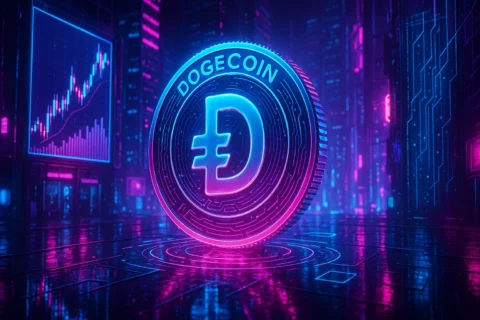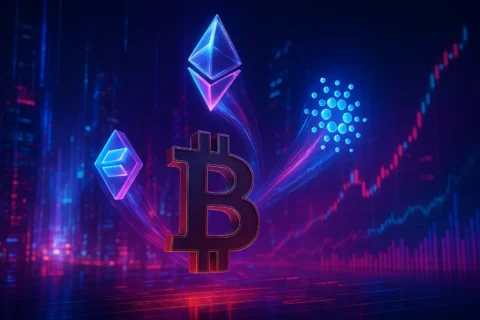Can a joke become a fortune?
The cryptocurrency world is a rollercoaster, thrilling and terrifying in equal measure. We often hear about Bitcoin and Ethereum, but what about the wild frontier of altcoins? Specifically, has the playful, often absurd realm of Meme Culture become a legitimate pathway to profit in digital assets? The staggering growth of certain digital currencies, largely fueled by online communities and viral trends, suggests that the answer might be a resounding yes. But how do you navigate this often-chaotic landscape and truly unlock profit from the meme, rather than becoming the meme yourself? Want to unlock altcoin profit? Dive into Meme Culture‘s 7 secrets for smarter crypto gains. Discover winning strategies now!
The explosion of Meme Culture into the financial mainstream, particularly within the cryptocurrency space, has been nothing short of phenomenal. What started as internet jokes and shared cultural references have morphed into powerful market forces, capable of propelling obscure tokens to multi-billion dollar valuations. For savvy investors, understanding these dynamics isn’t just about chasing the next big thing; it’s about deciphering the underlying sentiment, community power, and technological potential that often gets overlooked amidst the hype surrounding Meme coins. This deep dive will equip you with the knowledge to not only understand this phenomenon but also to leverage it for potentially significant gains.
Crypto Market Overview: Riding the Altcoin Wave
The cryptocurrency market is a dynamic ecosystem constantly in flux. While Bitcoin and Ethereum often dominate headlines, the performance of altcoins – any cryptocurrency other than Bitcoin – can be even more dramatic. In recent times, we’ve witnessed significant surges in altcoin prices, often triggered by technological advancements, new use cases, or, increasingly, by the powerful influence of online communities and social media trends.
Meme coins, a sub-genre of altcoins, exemplify this trend. Initially created as parodies of established cryptocurrencies, they have evolved into significant market players. Their price movements are frequently less tied to traditional fundamental analysis and more to community engagement, celebrity endorsements (real or perceived), and viral marketing. For example, the trajectory of Dogecoin and Shiba Inu demonstrated the incredible power of a united online community to drive demand and capital into an asset with initially very little intrinsic utility.
Key market indicators to watch include:
- Altcoin Market Cap Dominance: While Bitcoin and Ethereum still hold sway, shifts in altcoin market cap dominance signal a potential redistribution of capital.
- Social Media Sentiment Analysis: Tools that track mentions and sentiment around specific cryptocurrencies can provide early indicators of potential interest and price action.
- Trading Volume: Increased trading volumes for specific altcoins, especially those associated with Meme Culture, often precede significant price pumps.
- Airdrop Activity: While not directly Meme Culture, the prevalence of airdrops (free distribution of tokens) can indicate new projects entering the market or existing ones seeking broader adoption, sometimes leveraging meme-like marketing.
Understanding these indicators provides a data-backed lens through which to view the often-emotional landscape of altcoin investing, particularly when influenced by Meme Culture.

The Core Concept: How Meme Coins Actually Work
Diving deeper into the world of altcoins, especially those born from internet jokes, requires understanding their foundation.
What Are Altcoins / Meme Coins / Airdrops?
Altcoins, or “alternative coins,” are simply any cryptocurrencies that are not Bitcoin. This vast category includes everything from established projects with complex utility like Cardano and Solana to the more fringe, often joke-driven Meme coins.
Meme coins are a specific type of altcoin that gain popularity and value primarily through internet memes, social media trends, and online communities, rather than through a distinct technological innovation or utility from their inception. Dogs (like Dogecoin and Shiba Inu), frogs (Pepe), and other popular meme figures often form the basis of these tokens. Their value is largely driven by:
- Community Hype and Engagement: Enthusiastic online communities rally behind these coins, promoting them across social media platforms like Reddit, Twitter, and TikTok.
- Viral Marketing and Trends: Catchy slogans, relatable memes, and endorsement from influential figures (even if informal) can catapult a meme coin into public consciousness.
- Limited Utility (Initially): Often, meme coins begin with very little practical use. Their value is speculative, betting on the community’s ability to maintain interest and drive demand.
Airdrops, on the other hand, are a method of distributing cryptocurrency tokens to a wide audience, typically for free. Projects often use airdrops to raise awareness, reward early adopters, or encourage the use of their platform. While not directly linked to Meme Culture, the accessibility and hype around airdrops can sometimes intersect with meme coin strategies, particularly in building initial community momentum.
Key Components & Technologies
At their core, most altcoins, including Meme coins, are built on blockchain technology. This distributed ledger system provides the foundation for decentralization, transparency, and security.
- Blockchain Technology: This is the underlying distributed ledger that records all transactions across a network of computers. It ensures that transactions are immutable and transparent.
- Smart Contracts: Many altcoins, particularly those on platforms like Ethereum, utilize smart contracts. These are self-executing contracts with the terms of the agreement directly written into code. They enable automatic token creation, distribution, and other functionalities.
- Tokenomics: This refers to the design and economic principles of a cryptocurrency. It encompasses the total supply, distribution methods, inflation/deflation mechanisms, and how tokens are used within its ecosystem. For Meme coins, tokenomics can be highly varied, sometimes featuring extremely large supplies or mechanisms designed to incentivize holding.
- Decentralized Finance (DeFi): While not always directly tied to meme coins, the rise of DeFi has created fertile ground for new token launches. Many meme coins either integrate with or aim to build DeFi functionalities over time to increase their utility and long-term viability.
Understanding these technological underpinnings is crucial, especially when evaluating meme coins that aim to evolve beyond their initial meme status.
The Data-Driven Perspective: Beyond the Chuckles
While Meme Culture might seem driven by emotion and internet trends, a data-driven approach is essential for identifying genuine opportunities and mitigating risks.
Market Data & Trends
The performance of altcoins, and particularly meme coins, can be analyzed through several data points:
- Price Charts and Volume Analysis: Tracking historical price movements and trading volumes can reveal patterns of accumulation, distribution, and potential upcoming pumps. For instance, consistent volume increases alongside social media sentiment can be a strong albeit risky indicator.
- On-Chain Data: Analyzing data directly from the blockchain, such as the number of active addresses, transaction volumes, and holder distribution, can offer insights into a meme coin’s adoption and concentration of ownership. A high number of unique holders might suggest a broader community, while a few large holders could indicate potential for market manipulation.
- Social Media Analytics: Platforms like LunarCrush, Santiment, and even simple Twitter sentiment analysis tools provide quantifiable data on how often and how positively a particular cryptocurrency is being discussed. A surge in positive mentions, especially from influential accounts, can precede significant price action. For example, a 500% increase in daily mentions of a specific meme coin accompanied by a positive sentiment score of 70%+ could be a data signal to investigate further.
- Market Cap Trends: Observing the market capitalization of various meme coins over time can show which ones are gaining traction and which are fading. The exponential growth of a meme coin’s market cap over a short period, often fueled by viral adoption, is a key characteristic of the phenomenon.
Tokenomics & Market Health
For Meme coins, tokenomics can be a peculiar but critical factor:
- Total Supply and Circulating Supply: Some meme coins have trillions of tokens. A high total supply doesn’t necessarily mean a coin is worthless, but it means the price per token will remain very low unless demand is astronomical. Understanding the circulating supply is key to calculating the actual market cap.
- Distribution: How were the tokens initially distributed? Were they largely pre-mined and held by a few founders, or distributed widely through airdrops or fair launches? A highly concentrated distribution poses a greater risk of “rug pulls” or significant sell-offs by early holders.
- Utility and Burn Mechanisms: While many meme coins start with no utility, those that introduce features like staking, NFTs, or “burn” mechanisms (where tokens are permanently removed from circulation, thus reducing supply) can create organic demand and potentially sustainable value. For example, a token that burns 0.1% of every transaction could see its supply decrease over time, theoretically increasing its scarcity and value if demand remains constant or grows.
- Community Governance: Some meme coins are incorporating decentralized governance, allowing token holders to vote on proposals for the project’s future, aligning community interests with the coin’s development.
Examining these tokenomic factors, even for seemingly joke-based assets, can reveal underlying intentions and potential longevity, differentiating between a fleeting meme and a project with lasting appeal.
Risks, Challenges & Competition
Investing in Meme Culture-driven assets is not without its significant drawbacks.
Risks of Altcoins and Meme Coins
- Extreme Volatility: This is perhaps the most significant risk. Meme coins are known for their rapid and often irrational price swings. A coin can gain thousands of percent in a day and lose it just as quickly. This volatility is amplified by social media hype and the speculative nature of these assets.
- Lack of Intrinsic Value/Utility: Many meme coins are launched with no underlying technology, product, or service. Their value is entirely dependent on community sentiment and buyer speculation. When the hype dies down, the price can plummet to zero.
- Scams and Rug Pulls: The anonymity and rapid growth potential of meme coins make them prime targets for scammers. A “rug pull” is when developers abandon a project, taking investors’ money with them. This is a prevalent risk in the less regulated corners of the crypto market.
- Regulatory Uncertainty: Governments worldwide are still trying to understand and regulate cryptocurrencies. New regulations could significantly impact the value and trading of certain altcoins and meme coins.
- Whale Manipulation: A small number of large holders (“whales”) can significantly influence the price of meme coins by buying or selling large quantities, often leading to sharp, unpredictable movements.
How Does Meme Culture Crypto Stack Up Against Competitors?
When we compare meme coins to more established altcoins with clear utility, the differences become stark:
| Feature | Meme Coins (e.g., Doge, Shiba) | Utility-Focused Altcoins (e.g., ETH, ADA, SOL) |
|---|---|---|
| Primary Driver | Community hype, social media trends, speculative interest | Technological innovation, real-world use cases, decentralized applications (dApps) |
| Utility | Often limited or non-existent at launch; can evolve over time | Built with specific purposes (smart contracts, DeFi, NFTs, etc.) |
| Volatility | Extremely high; prone to rapid pumps and dumps | High, but generally less extreme than meme coins; often tied to broader market sentiment and project developments |
| Risk Profile | Very high due to speculative nature and potential for scams | Moderate to High, depending on project stage and market conditions |
| Development | Community-driven, often less structured or formally governed | Professional development teams, roadmaps, active research & development |
| Tokenomics | Varied; often large supplies, burning mechanisms, inflationary/deflationary | Designed for network function, gas fees, staking rewards, project funding |
| Market Cap | Can reach billions based on hype, but often lacks sustainable growth | Scalability varies; driven by adoption and network effects |
| Long-Term Viability | Highly uncertain; reliant on sustained community engagement | Dependent on technological adoption, problem-solving capabilities, and developer ecosystem |
This comparison highlights that while Meme Culture can create explosive short-term opportunities, utility-focused altcoins generally offer a more robust foundation for long-term investment, albeit with different risk/reward profiles.
The Future Outlook
The trajectory of Meme Culture in crypto is far from settled, presenting a fascinating outlook.
What’s Next for Altcoins / Meme Coins / Airdrops?
The future for Meme coins is likely to be a mix of continued speculative frenzies and, possibly, a maturation of the concept.
- Ever-Evolving Meme Cycles: New memes and internet trends will undoubtedly continue to spawn new meme coins. The cycle of hype, rapid growth, and potential collapse will likely persist. Understanding these cycles and identifying emerging trends early will be key for those seeking to profit from this niche.
- Integration with Real-World Utility: As the market matures, we may see more meme coins attempting to build genuine utility. Projects that can bridge the gap between community engagement and practical applications (e.g., payment systems, NFT marketplaces, decentralized gaming) could carve out a more sustainable niche. Think of how Dogecoin has seen some adoption as a tipping currency or for small transactions.
- Increased Scrutiny and Regulation: As meme coins gain more attention and capital, they will likely attract more attention from regulators. This could lead to greater transparency requirements or even outright bans in some jurisdictions, impacting their accessibility and valuation.
- The Rise of “Utility Memes”: We might see a new category emerge where meme coins are designed with underlying utility from the outset, leveraging the viral power of memes to drive adoption of their functional features. This could bridge the gap between the speculative fervor of meme coins and the utility-centric nature of established altcoins.
- Impact of Airdrops on New Projects: The ongoing trend of airdrops will continue to introduce new tokens to the market. Many of these will likely adopt meme-like marketing strategies to gain early traction, further blurring the lines within the altcoin space.
For seasoned investors, the future outlook suggests a continued need for vigilance, adaptability, and a strong understanding of both community sentiment and the underlying technological potential of any asset, meme-inspired or otherwise.
Conclusion
The question of whether Meme Culture can unlock altcoin profit is no longer a hypothetical one; it’s a reality that has reshaped parts of the cryptocurrency landscape. We’ve explored the essence of Meme coins, delved into the data that drives their movements, acknowledged the inherent risks, and considered their competitive standing.
Here are the seven key secrets to navigating this unique corner of the crypto market:
- Understand the Community is King: The power of online communities like Reddit and Twitter is paramount. Their collective enthusiasm can create massive demand.
- Monitor Social Sentiment and Trends: Data from social media analytics often provides leading indicators of potential price movements. Stay ahead of the curve by understanding what’s trending.
- Analyze Tokenomics Wisely: Even for meme coins, supply, distribution, and any utility or burn mechanisms can significantly impact long-term potential and risk.
- Prioritize Early Entry (with Caution): Getting in early on a trending meme coin can offer the highest reward, but carries the highest risk. Thorough research, even for a joke, is vital.
- Diversify and Manage Risk: Never invest more than you can afford to lose. Meme coins should be a small, speculative part of a well-diversified portfolio.
- Be Wary of “Rug Pulls” and Scams: Independent research on the project team, contract coding, and typical scam indicators is crucial for self-preservation.
- Look for Evolving Utility: While born from memes, projects that develop or demonstrate practical uses or innovative tokenomics have a better chance of long-term survival and growth.
The world of Meme coins is a testament to the evolving nature of finance and the power of digital communities . While it offers exciting, albeit risky, opportunities for profit, a data-driven, cautious approach is your greatest asset.
What are your thoughts on Meme Culture‘s impact on altcoins? Have you had any success or cautionary tales with Meme coins? Share your insights in the comments below!
For more in-depth analyses on altcoins, airdrops, and DeFi strategies, be sure to subscribe to our newsletter for regular updates and expert insights. Explore our related articles on altcoin trading strategies and understanding blockchain fundamentals to further enhance your knowledge.
FAQs
Q1: Are meme coins a good investment for beginners?
A1: Meme coins are highly speculative and volatile. While they can offer high rewards, they also carry a significant risk of loss. Beginners are generally advised to start with more established cryptocurrencies like Bitcoin and Ethereum and to only invest a small portion of their capital in meme coins if they choose to do so, understanding the risks involved.
Q2: How can I identify a potential “rug pull” in a meme coin project?
A2: Be suspicious if the project founders are anonymous, if there’s a sudden and massive sell-off by early holders, or if liquidity is removed from decentralized exchanges. Thoroughly research any project before investing.
Q3: What’s the difference between an altcoin and a meme coin?
A3: Altcoins are any cryptocurrencies other than Bitcoin. Meme coins are a type of altcoin that gains popularity primarily from internet memes and social media trends, often with little initial utility.
Q4: Should I buy crypto based purely on social media hype?
A4: While social media hype can indicate potential short-term price movements, it’s not a sustainable basis for investment. Always conduct your own research (DYOR) and consider fundamental factors like utility, technology, and tokenomics.
Q5: How do airdrops relate to meme coins?
A5: Airdrops are a distribution method. Projects might use airdrops to build initial community momentum, and this often overlaps with meme coin strategies where widespread adoption and social sharing are key to success.






